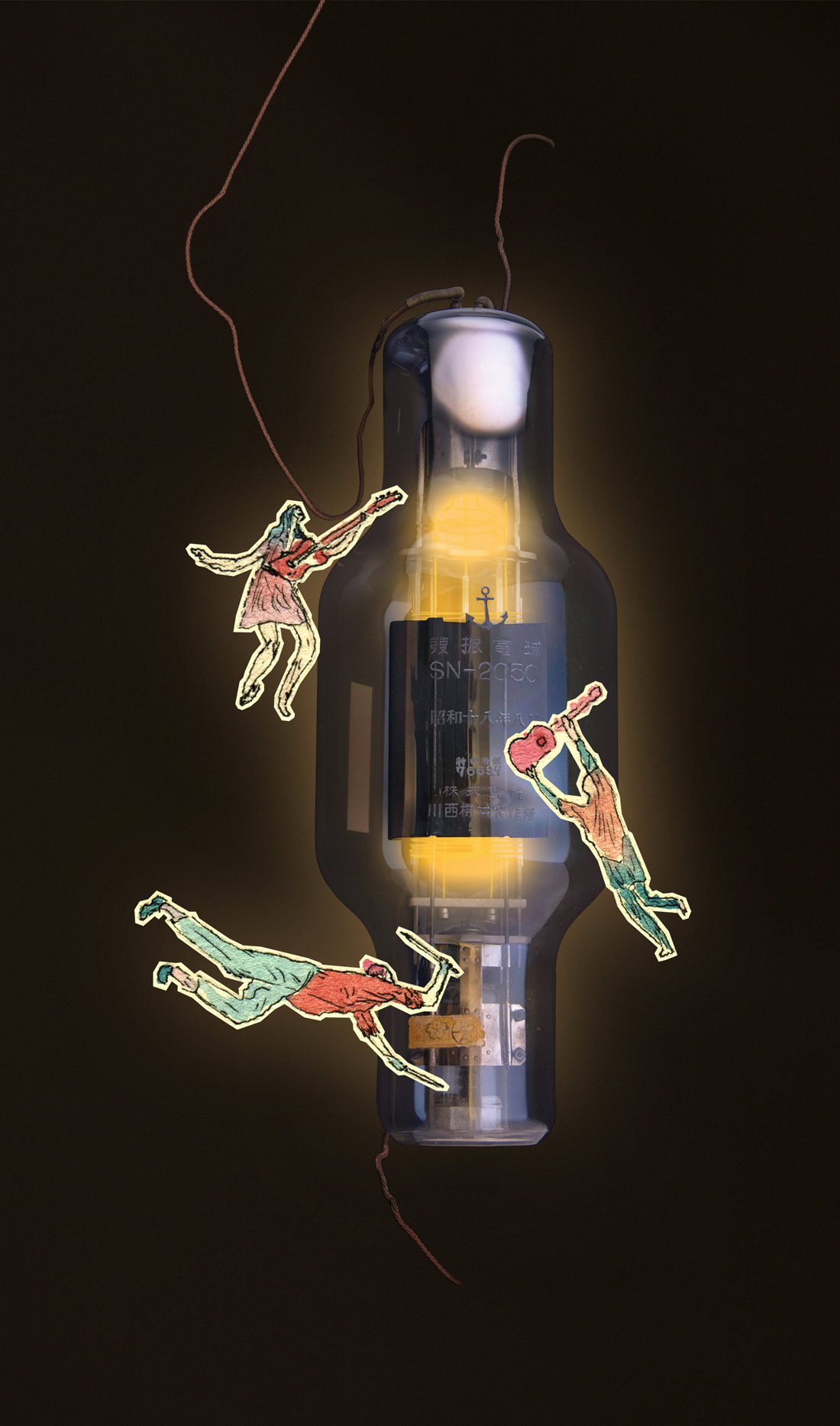A shotgun shell — an actual shotgun shell, from a 12 gauge shotgun — turned into a microphone. I liked the idea immediately. "Let's use these shells for creating, rather than destroying, something."
I ordered a pair of the original, red-colored Red12 omnidirectional mics very early on in the manufacturer's life, and I immediately fell in love with the form factor. It's a small mic, about 4'' long. I put one up as a "heart mic" on the drum kit (in the middle of the kit, between the snare and the floor tom, above the batter-side of the kick). It immediately reminded me of the Stapes omni mics [Tape Op #30] that predated the very nice Avenson ones. The capsule is sourced by 12 Gauge, and I don't know who makes it, but it sounds great — and I don't care what's inside when something like this works so well. The capsule sounds fast and open, and it seems to work no matter what you put it in, as evidenced by it showing up here in a piece of ammunition. The Red12 is really a snappy little mic with a great, neutral frequency response. It works really well for pretty much anything you would expect an omni to capture. But it is especially great up-close on drums.
When the Green12 cardioid version came out, I got a pair right away. Side ports are cut into the brass of the shotgun shell to implement the cardioid polar pattern. These are also really good — for overheads, or as a spaced pair for room ambience. Or perhaps even on toms — which I will have to try.
Out of nowhere, the company then made a stereo condenser mic, still in a single shotgun shell — the Black212. I liked this one right away. A very small, phase-perfect stereo mic that sounds killer, and is very inexpensive? Awesome. I brought one to a live Puss n Boots (Norah Jones, Sasha Dobson, Catherine Popper) recording I was producing and engineering. It was my primary ambience mic for that recording, and it ruled. Low noise, great sound, killer image of the performance — it was really great. I have since used that mic on a ton of stuff. It was the primary room mic in our new B room at Studio G Brooklyn when Dub Trio and I did a collaborative thing with Meshell Ndegeocello. The B room is a bit more live than our A room, and the little Black212 just grabbed exactly what we wanted to hear. It was totally great with a little squeeze from the 33314 compressors in our Neve console.
A bunch of pals and peers have grabbed pairs of the 12 Gauge mics since I first started ranting about them, and I feel strongly that any studio, no matter how vast its mic collection, will find these mics useful. The mics are totally inexpensive, built with care by a great person, and have worked really, really well on anything I have put them on. I have no doubt that you would get way more than your money's worth out of these, for years to come. In a microphone market flooded with weird, cheap, not- so-cool things, the 12 Gauge Microphones line serves as a refreshing, inexpensive option for real working studios.




_disp_horizontal_bw.jpg)